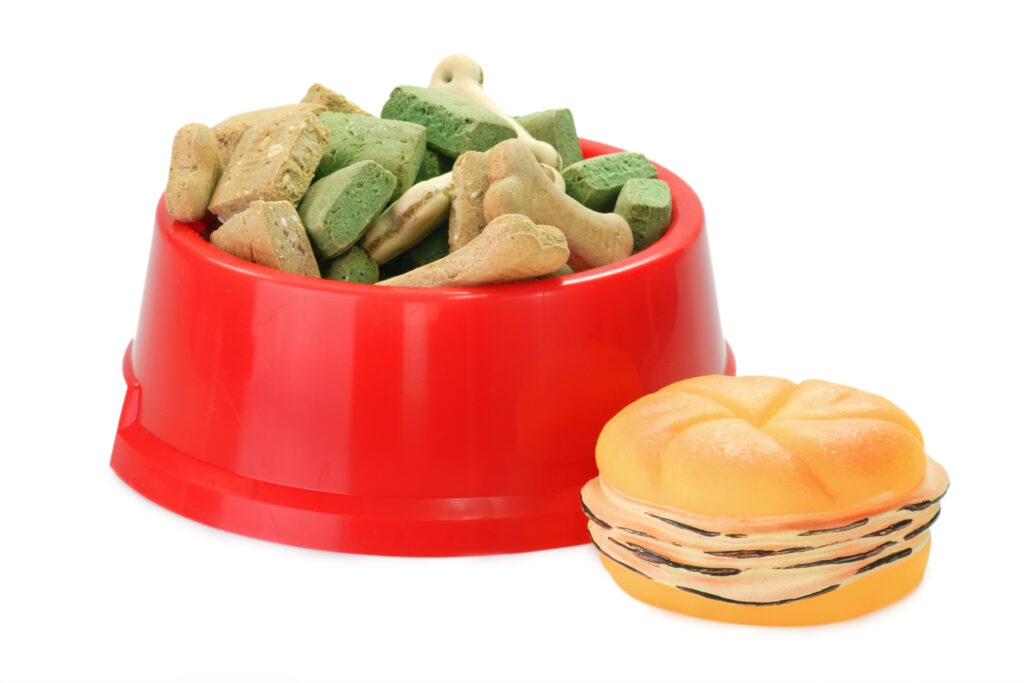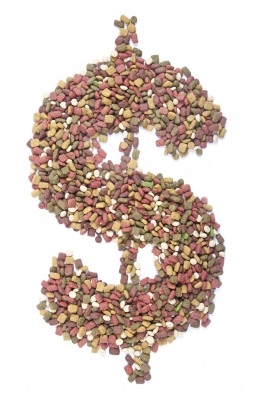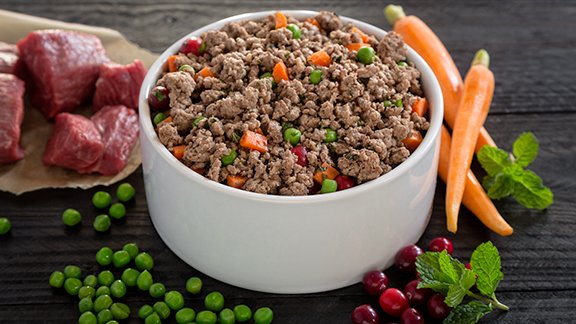Would You Choose Fresh Food Over Manufactured?
A recent survey reported in Pet Food Industry Magazine revealed current consumer pet food choices, with an interesting twist. As expected, dry kibble was the most popular choice, used by 81% of people. Fifty percent of respondents used a canned or wet product, while 17% used fresh and 9% raw. Those fresh and raw numbers were about twice what I would have predicted, which I find very encouraging. But I was completely surprised by the next data.
When asked if money and availability were not factors, a staggering 34% would buy fresh and 7% raw! That’s a total of 41% that would choose non-kibble options! This data tells us that people want fresh food (whether cooked or raw) and not mega-processed, manufactured pellets to put in the bowl.
According to the survey, price was the main obstacle for fresh pet food. Forty-four percent of survey respondents felt fresh was too expensive, and 14% said it was harder to store and/or serve.
Sixteen percent of owners reported not wanting to switch their foods. When asked what would influence them to make changes, health claims (23%), price (22%), and veterinary recommendations (22%) were the most popular responses. If you consider that many veterinary recommendations are made for health reasons, it seems reasonable to say that up to 45% of respondents would change foods for health reasons.
I find these survey results very interesting and encouraging. The results emphasize that people want to do what they can for their dog’s health. A significant number (41%) want to switch to fresh foods (raw and/or cooked).
So what if owners realized that feeding fresh was cost effective? Or that it really isn’t that hard to store or serve?
First, consider cost, exclusive of tax: Farmina, a popular kibble, is $3.03 per pound at Chewy, for the grain inclusive lamb and blueberry formulation. A commonly recommended veterinary diet, Hill’s i/d, often prescribed for digestive issues, comes in at $3.67 a pound. Other popular Hill’s products go up to $4.59 a pound. Keep in mind that these products, although considered premium or high quality, are not made with human grade ingredients. These are feed grade products, and may contain ingredients that did not pass food inspection.
In contrast, I can go to my supermarket, and purchase human quality meats. This week, chicken is on sale for $0.89 a pound. Pork chops are $0.99 a pound. Ground beef (80/20) is $3.99 a pound. With the investment of some time, a nutritionally complete recipe, and possibly a few supplements, I can have a human quality meal for my dog, at half the cost of the feed grade products. Using wholesale clubs and buying in bulk will lessen the cost further. Alternatively, I could purchase a commercial product that is nutritionally complete. It is common for poultry based grinds to retail around $3.00 a pound here, while beef will be $4.00 – $5.00 a pound. Using these products is simple – defrost, place in a bowl, and serve.
Beyond the cost of food, veterinary costs should be factored in. Well designed fresh food feeding (cooked or raw) is associated with fewer veterinary visits for GI problems, skin issues and allergies, in my experience as well as that of my holistically-minded colleagues. Fresh food diets have been shown to be more digestible, and certainly are more palatable and enjoyable by dogs. Hypothetically, if you dog came in for an ear infection and a GI disturbance once each year, that could amount to two office calls, testing, medication, possibly a recheck appointment or two. Cost? In my area, two office calls, one recheck, typical medications would average $275 – $350 for a 50 pound dog. And that’s not even considering time taken off from work, effort in treating the problem for a week or more, and aggravation. Balance that against the perceived higher cost of fresh food feeding.
It’s my hope that this blog makes some folks who are hesitating to jump in to fresh food feeding to take the plunge. Your dogs will thank you for it! Use the resources and links in this blog to learn the whys and hows. I also recommend getting your copy of The Forever Dog, for new info on how to help your dog live better and longer. You can also visit the book website for more detailed resources.
Please comment and share on my Facebook page.


